In our previous blog post we had discussed about Autolaunched Flow in Salesforce. In these blog post we discuss about Record-Triggered Orchestration Flow
Contents
- 0.0.1 Record-Triggered Orchestration Flow
- 0.0.2 What is Record-Triggered Orchestration Flow
- 0.0.3 Benefits of Using Record-Triggered Orchestration Flow
- 0.0.4 Key Features
- 0.0.5 Setting Up Record-Triggered Orchestration Flow
- 0.0.6 Step-by-Step Guide
- 0.0.7 Designing Your Flow
- 0.0.8 Building Blocks of the Flow
- 0.0.9 Advanced Configuration
- 0.0.10 Testing and Debugging
- 0.0.11 Common Issues and Solutions
- 0.0.12 Deployment and Monitoring
- 0.1 Monitoring Tools
- 0.2 Marketing Campaigns
- 1 Conclusion
- 2 FAQs
- 2.0.0.0.1 What is the primary use of Record-Triggered Orchestration Flow?
- 2.0.0.0.2 How can I optimize my flow for better performance?
- 2.0.0.0.3 What are the common pitfalls to avoid?
- 2.0.0.0.4 Can Record-Triggered Orchestration Flow integrate with other platforms?
- 2.0.0.0.5 What is the future outlook for this technology?
Record-Triggered Orchestration Flow
What is Record-Triggered Orchestration Flow
Record-Triggered Orchestration Flow is a Salesforce feature that allows users to automate multi-step processes triggered by changes in Salesforce records. Whether it’s creating tasks, updating fields, or integrating with external systems, this flow ensures that everything happens seamlessly and in real time.
Key Components
- Triggers: These are events that initiate the flow, such as record creation, updates, or deletions.
- Actions: Tasks that the flow performs, like sending emails or updating records.
- Decisions: Conditional logic that determines the path of the flow based on record data.
- Sub flows: Reusable flows that can be called within another flow to modularize and simplify complex processes.
Benefits of Using Record-Triggered Orchestration Flow
Automation Efficiency
Automating repetitive tasks saves time and reduces manual errors. With Record-Triggered Orchestration Flow, workflows are streamlined, ensuring that tasks are executed accurately and efficiently.
Error Reduction
By automating processes, the likelihood of human error is significantly reduced. This leads to more reliable data handling and improved operational consistency.
Enhanced User Experience
Users benefit from a smoother, more intuitive experience as the system handles routine tasks automatically, allowing them to focus on more strategic activities.
Key Features
Real-Time Triggers
The flow responds to record changes instantly, ensuring that actions are taken promptly.
Multi-Step Processes
Complex workflows involving multiple steps can be automated, from initial data entry to final task completion.
Conditional Logic
Flows can incorporate conditional logic, enabling different actions based on specific criteria within the records.
Setting Up Record-Triggered Orchestration Flow
Prerequisites
- Salesforce Administrator access
- Understanding of Salesforce Objects and Fields
- Familiarity with Flow Builder
Step-by-Step Guide
Login to Salesforce Account.
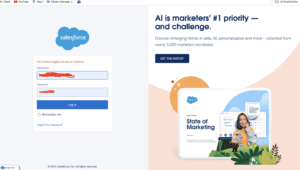
Click Gear icon Navigate to Setup.
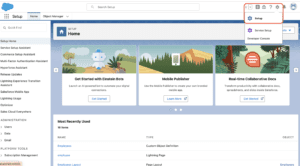
Search Quick find box in Flow.
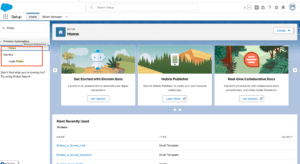
Click New Flow.
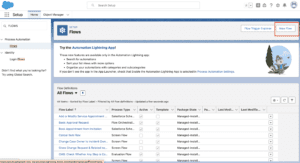
Select Record Triggered-orchestration.
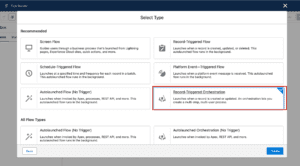
Choose an Object Select Record Creation.
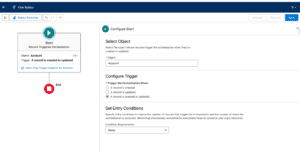
Add elements Click Action Button.
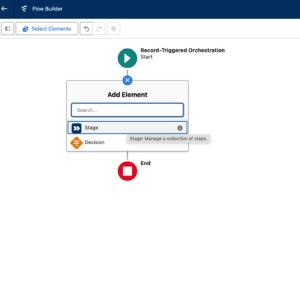
Save flow.
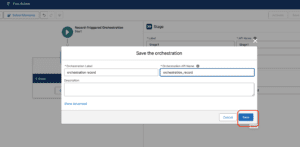
Click Activate Flow.
Designing Your Flow
Identifying Trigger Criteria
Determine the specific conditions that will trigger the flow. This could be a change in a particular field or the creation of a new record.
Mapping Out the Process
Visualize the entire process from start to finish. Identify the actions needed at each step and how they connect to ensure a seamless workflow.
Building Blocks of the Flow
Actions
Actions are the tasks your flow performs, such as creating records, sending emails, or posting to Chatter.
Decisions
Decision elements introduce conditional logic to your flow, allowing it to branch based on specific criteria.
Loops
Loops are used to iterate over a collection of records, performing actions on each one.
Advanced Configuration
Using Sub flows
Sub flows allow you to modularize your flows, making them easier to manage and reuse across different processes.
Integration with External Systems
Leverage Salesforce’s integration capabilities to connect your flow with external systems, ensuring data consistency and process continuity.
Testing and Debugging
Best Practices
- Test your flow with different scenarios to ensure it handles all possible conditions.
- Use debug logs to trace the flow’s execution and identify any issues.
Common Issues and Solutions
- Infinite Loops: Ensure that your flow’s logic prevents it from looping endlessly.
- Permission Errors: Verify that the flow has the necessary permissions to perform its actions.
Deployment and Monitoring
Deployment Strategies
- Sandbox Testing: Test your flow in a sandbox environment before deploying it to production.
- Change Sets: Use change sets to move your flow from sandbox to production.
Monitoring Tools
- Flow Execution Logs: Monitor the flow’s execution and identify any errors or performance issues.
- Salesforce Reports: Create reports to track the flow’s impact and effectiveness.
Use Cases
Sales Process Automation
Automate lead nurturing, opportunity management, and post-sale follow-ups to streamline your sales process.
Customer Service Management
Enhance customer service by automating case assignment, escalation, and resolution workflows.
Marketing Campaigns
Automate campaign management, including lead scoring, segmentation, and follow-up activities.
Best Practices for Record-Triggered Orchestration Flow
Design Tips
- Keep flows simple and modular to enhance maintainability.
- Use subflows to avoid duplication and promote reuse.
Performance Optimization
- Limit the number of elements in a flow to improve performance.
- Optimize trigger conditions to minimize unnecessary flow executions.
Challenges and How to Overcome Them
Scalability Issues
Design your flow to handle large volumes of data efficiently. Use bulk processing where possible.
Complexity Management
Break down complex workflows into smaller, manageable subflows. Document each step to ensure clarity.
Future of Record-Triggered Orchestration Flow
Trends and Innovations
- AI Integration: Leverage AI to enhance decision-making within flows.
- Improved UI: Expect more intuitive interfaces to simplify flow design and management.
Salesforce Roadmap
Salesforce continues to invest in automation tools, promising even more powerful and flexible flow capabilities in future releases.
Conclusion
Record-Triggered Orchestration Flow is a game-changer for automating complex processes in Salesforce. By understanding its features, benefits, and best practices, you can leverage this tool to enhance efficiency, reduce errors, and improve the user experience. Stay ahead of the curve by embracing this powerful automation capability and preparing for its future advancements.
We Want to more about Record-Triggered Orchestration Flow Click Here
FAQs
What is the primary use of Record-Triggered Orchestration Flow?
The primary use is to automate multi-step processes triggered by changes in Salesforce records, improving efficiency and accuracy.
How can I optimize my flow for better performance?
Optimize performance by keeping flows simple, using subflows, and limiting the number of elements and conditions.
What are the common pitfalls to avoid?
Avoid infinite loops, permission errors, and overly complex flows. Test thoroughly to catch and fix issues early.
Can Record-Triggered Orchestration Flow integrate with other platforms?
Yes, it can integrate with external systems through Salesforce’s integration capabilities, ensuring seamless data flow and process continuity.
What is the future outlook for this technology?
The future is bright, with advancements in AI integration, improved user interfaces, and enhanced flexibility and power in flow capabilities.
In our next blog post we will discuss about What is Screen Flow Distribution

2 thoughts on “Record-Triggered Orchestration Flow”